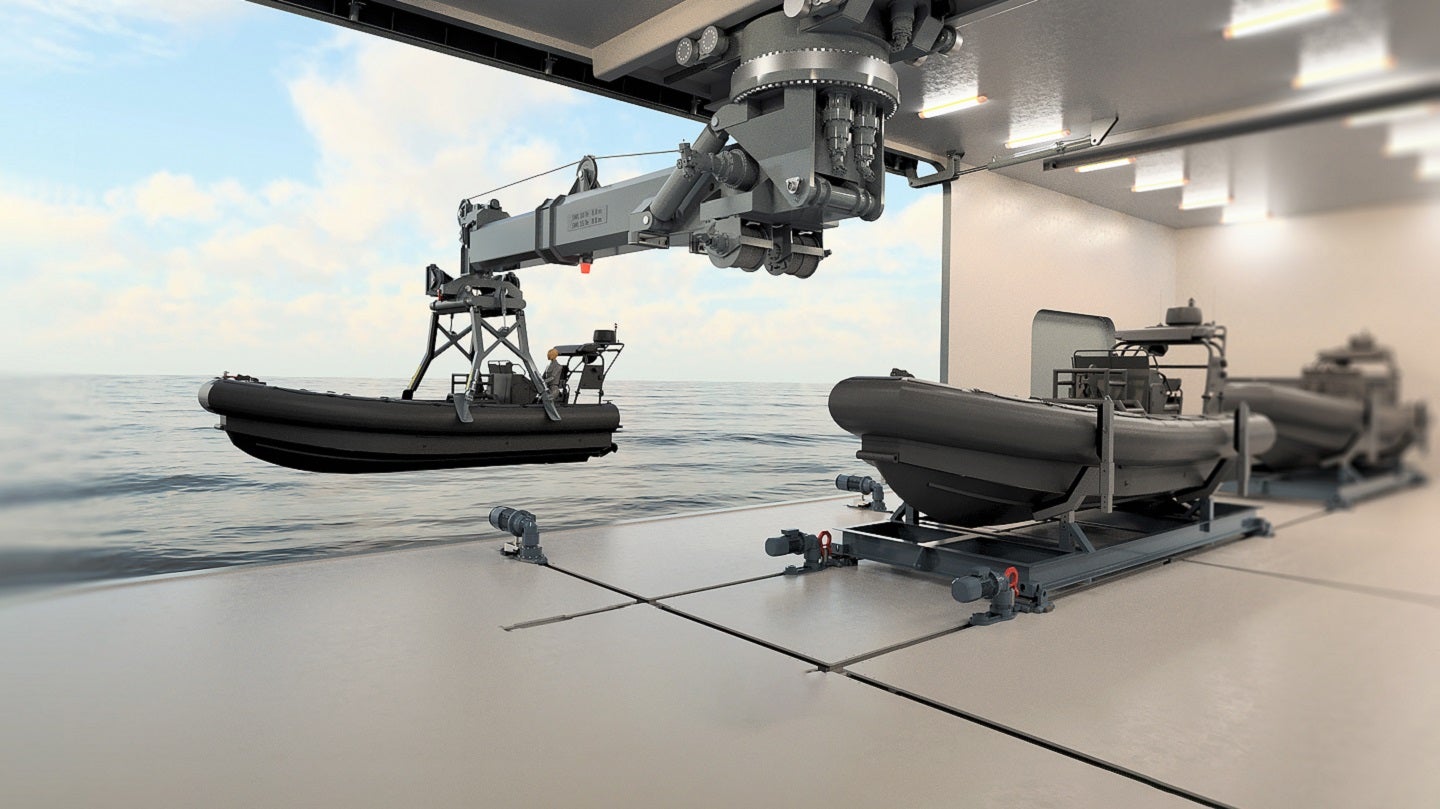
Kongsberg Maritime is set to offer its new Mission Bay Handling System (MBHS) into the naval market for use on platforms from surface combatants, multi-purpose patrol craft, and logistics vessels, with much of the technology utilised derived from the commercial shipping sector.
The MBHS is scalable, depending on the size of the host vessel’s mission bay, and consists of three key elements: the Overhead Frame System, the Frame System, and Multi-Purpose Hangar Frame.
The Overhead Frame System comprises rails and interface unit that connect with interchangeable tools, with a lifting capacity of 12 tonnes. Meanwhile, the Frame System is fixed to the desk above the mission bay, allowing in-sea assets to be suspended and moved from embarked storage spaces.
Finally, the Multi-Purpose Hangar Crane can handle 10ft and 20ft ISO containers up to 15 tonnes, rotating through 360 ° and extending to the water level. The crane can perform deployment and retrieval of crewed or uncrewed vessel displacing up to 10 tonnes.

“Through our extensive experience from a lot of similar systems we have developed for subsea, oceanographic and research ships, this crane is not only very capable, but it gives navies options. It can handle cargo in standard shipping containers, and switch to deploying subsea and surface craft, quicky and safely,” said Robert Breivik, Kongsberg’s senior sales manager – naval.
Additionally, various auxiliary equipment is available to complement the two main handling systems: a deck skid system, containerised launch and recovery systems, cargo handling crane for containers, and an overhead auxiliary crane for lighter loads.
Speaking prior to the 11 September announcement, Breivik told Naval Technology that the system was navalised through the integration of shock testing and meeting various Nato maritime regulations.
Regarding integration of the MBHS into a host vessel, Breivik added that it was important “to be early in the project” in order to influence the shape and design of the mission bay. Kongsberg has been in discussions with potential customers in Europe and the Asia-Pacific region, although specific countries were not disclosed.
Modular mission bay at the core of modern warship design
The integration of modular mission bays is at the core of modern warships design, particularly in Nato or allied countries where vessels are developed to fulfill a range of roles, with a reconfigurable deck space considered a key capability.
In the UK, the Royal Navy will add two new frigate classes to its fleet in the coming years – the Type 31 general purpose frigate, and Type 26 anti-submarine warfare frigate – and both will feature a mid-mounted mission bay. Such mission bays are capable of accommodating equipment such as rigid-hulled inflatable boats, uncrewed surface and uncrewed subsurface vessels, or commercial TEU containers for humanitarian and disaster relief operations.
In addition, the UK and the Netherlands in July announced their intention to jointly develop a new Multi-Role Support Ship (MRSS). The MRSS will be a sea to land strike capability, designed to operate in amphibious task groups – known as Littoral Response Groups – deploying marines to global crises, fully equipped with their vehicles, boats, aircraft, and weaponry.




